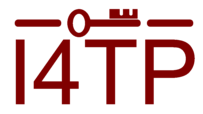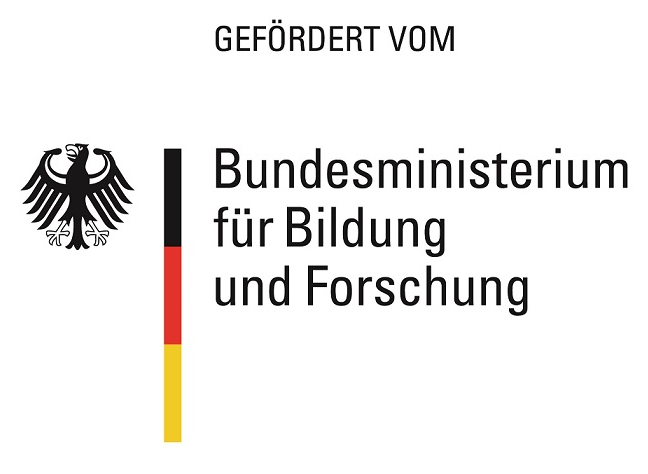Veröffentlichungen
| [1] | Nehen, J.; Treber, S. & Lanza, G. (2018), „Prozessmodell für das Auslaufmanagement“, Industrie 4.0 Management, Band 34, Nr. 5, S. 7-10. Abstract Durch die Möglichkeiten des weltweiten Handels und eine zunehmende Sättigung der Märkte stehen viele Unternehmen in einem starken Wettbewerb. Der Wunsch der Kunden nach individualisierten Produkten erfordert eine Produktion, die einen hohen Grad an Flexibilität aufweist und Variantenreichtum beherrscht. Mit einer steigenden Anzahl der Produktanläufe und einer Verkürzung der Produktlebenszyklen wächst auch die Zahl der Produktausläufe. Diese sollten unter Berücksichtigung der Kosten und möglicher Verbesserungspotenziale in der Produktion gesteuert werden. In diesem Beitrag wird ein Prozessmodell zur Unterstützung eines Serienauslaufs vorgestellt. Die Veränderung der Kundenbedürfnisse tritt nicht nur auf Konsumgütermärkten sondern auch auf Märkten von Investitionsgütern auf. Betrachtungsgegenstand ist deswegen ein Produktauslauf in der Nutzfahrzeugindustrie. |
|
| [2] | Yang, S.; Boev, N.; Haefner, B. & Lanza, G. (2018), „Method for Developing an Implementation Strategy of Cyber-Physical Production Systems for Small and Medium-sized Enterprises in China“. Procedia CIRP, Hrsg. ELSEVIER, S. 48-52. 10.1016/j.procir.2018.01.027 Abstract Enabled by the development of internet technologies, cyber-physical production systems (CPPS) are expected to open up entirely new possibilities to improve the efficiency of existing assembly systems of industrial companies. Nevertheless, realizing the potential of CPPS still remains a difficult task for small and medium-sized enterprises (SME), given the high variety of improvement possibilities offered by CPPS enabling technologies and the limited resources for their deployment. Hence, it is necessary to develop an implementation strategy of CPPS. Meanwhile, the consideration of location factors could support industrial companies to identify the appropriate CPPS implementation strategy since the location factors highly effect assembly system environment. In this context, a new approach to analyse the influence of location factors on the implementation of CPPS is exposed in this paper, which aims at investigating and identifying of relationships in between. Firstly, an application map of CPPS is generated. Secondly, the manufacturing industry status analyzed and subsequently a catalog of currently important location factors for the assembly systems are identified. Then a qualitative model of a relational analysis is established by an agglomerative hierarchical clustering algorithm. An industrial case study is used to demonstrate the applicability and the validity of the proposed approach. |
|
| [3] | Yang, S.; Schrage, J.; Haefner, B. & Lanza, G. (2019), „Development of a regionalized implementation strategy for smart automation within assembly systems in China“. 80, Hrsg. Procedia CIRP, S. 723-728. 10.1016/j.procir.2019.01.039 Abstract Companies struggle to overcome the difficulties stemming from the dynamic environment of global production due to the specific conditions in different regions. Particularly, insufficient know-how about a regionalized implementation strategy of smart automation (SmAu) technologies is one significant difficulty for enterprises. Thus, developing a key performance indicator (KPI) oriented, regionalized implementation strategy for smart automation technologies is increasingly important. In this context, a new approach is exposed to systematically investigate and identify the interdependencies among location factors, smart automation technologies, and KPIs. Firstly, the environment consisting of location-related factors, KPIs and smart automation technologies is defined in detail. Further, a Catalog quantifies the influence of different regions in China. Secondly, important aspects to model the qualitative and quantitative interdependencies in a multimethod simulation are introduced. Subsequently, an approach to analyze suitable implementation strategies is presented. A case study based on a production line for digitalized production technology is used to validate the proposed approach. |
|
| [4] | Gönnheimer, P.; Kimmig, A.; Mandel, C.; Stürmlinger, T.; Yang, S.; Schade, F.; Ehrmann, C.; Klee, B.; Behrendt, M.; Schlechtendahl, J.; Fischer, M.; Trautmann, K.; Fleischer, J.; Lanza, G.; Ovtcharova, J.; Becker, J. & Albers, A. (2019), „Methodical approach for the development of a platform for the configuration and operation of turnkey production systems“. Procedia CIRP, Hrsg. Putnik, G., S. 880-885. 10.1016/j.procir.2019.04.260 Abstract Shorter product lifecycles lead not only to faster time-to-market for products but also to the need for just as fast available associated production systems. These shorter product lifecycles, as well as the increasing individualization of products, also result in further decreasing production lot sizes. Young companies in China in particular are characterized by a very high speed of innovation but may not have the necessary manufacturing knowledge or capacities to bring their developed products to the market with a scalable production. For this reason, there is a great need to quickly set up and commission turnkey production systems or to reconfigure existing production systems for new production tasks in the shortest possible time. This paper describes the design and architecture of a cloud platform with the aim to support a manufacturer independent design process for turnkey production systems. This process ranges from the product to be manufactured to the operation of the production system. Firstly, the structure and methodology used to link the various objectives are discussed. The system for recording and structuring product and production system data to create reusable modules from components and machines is described. Subsequently, the use of standardized modules is developed to support reconfiguration of the production system during operation. In addition, the digital business models tailored to the production system are proposed to the platform user for commissioning and operation of the plant. A case study is conducted to validate the proposed methodology. |
|
| [5] | Barton, D.; Gönnheimer, P.; Schade, F.; Ehrmann, C.; Becker, J. & Fleischer, J. (2019), „Modular smart controller for Industry 4.0 functions in machine tools“. Procedia CIRP, Hrsg. Butala, P.; Govekar, E. & Vrabič, R., S. 1331-1336. 10.1016/j.procir.2019.04.022 Abstract In machine tools, Industry 4.0 functions can increase availability through predictive maintenance, while other functions improve productivity and workpiece quality through process supervision and optimisation. Many of these functions rely on data communication between systems from different suppliers. Requirements regarding latency and computing vary widely depending on the application. Based on an analysis of these requirements, a smart controller for the implementation of Industry 4.0 is designed, using a hypervisor to allow for the integration of soft real-time and best-effort applications. |
|
| [6] | Gönnheimer, P.; Kimmig, A.; Ehrmann, C.; Schlechtendahl, J.; Güth, J. & Fleischer, J. (2019), „Concept for the Configuration of Turnkey Production Systems“. Procedia CIRP, Hrsg. Dietrich, F. & Krenkel, N., S. 234-238. 10.1016/j.procir.2020.01.047 Abstract Shorter product lifecycles and increasing individualization of products lead to the necessity for a reoccurring process, which includes the selection and configuration of production systems to provide a system that produces the product. Especially in fast developing countries like China, the offer for this knowledge can hardly supply the demand. In order to solve this, this paper presents a systematic approach in the form of a multi-stage process. In the first stage, a configuration logic maps product requirements with the properties and specifications of production machines together with equipment and matches them using a uniform data information model for both products and production modules. In the second stage, the turnkey production system is set up, commissioned and operated based on the Industrie 4.0 administration shell. The presented approach has been prototypically implemented on an online platform and demonstrated on a real production system using a new product that has been integrated into production. |
|
| [7] | Yang, S.; Liu, H.; Zhang, Y.; Arndt, T.; Hofmann, C.; Häfner, B. & Lanza, G. (2020), „A Data-Driven Approach for Quality Analytics of Screwing Processes in a Global Learning Factory“. Learning Factories across the value chain - from innovation to service, S. 454-459. 10.1016/j.promfg.2020.04.052 Abstract A network can be very beneficial for root cause analysis due to different data from various factories. Nevertheless, it is difficult to obtain reliable and consistent data. In this context, this paper aims to develop a method for data-driven oriented quality analytics of screwing processes considering a global production network. |
|
| [8] | Gönnheimer, P.; Ehrmann, C.; Wu, Y.; Kimmig, A. & Fleischer, J. (2021), „Konzeption und Entwicklung eines Produktionsanlagenkonfigurators im Rahmen einer deutsch-chinesischen Industrie 4.0 Fabrikautomatisierungsplattform“, Zeitschrift für wirtschaftlichen Fabrikbetrieb (ZWF), Band 116, Nr. 11, S. 836-840. 10.1515/zwf-2021-0193 Abstract Kürzere Produktlebenszyklen und der fortschreitende Trend zur Individualisierung von Produktionsgütern mit immer kleineren Losgrößen führen zu der Notwendigkeit eines wiederkehrenden Prozesses, der die Auswahl und Konfiguration von Produktionssystemen beinhaltet. Produktionssysteme werden dabei auf Basis der Produktanforderungen aus einer großen Zahl komplexer Einzelmaschinen und Komponenten zusammengestellt, was zu einem hohen Integrationsaufwand führt. In diesem Beitrag wird daher ein Ansatz zur nutzerindividuellen, modellbasierten Auswahl von Maschinen und Anlagen vorgestellt, der im Rahmen eines deutsch-chinesischen Industrie 4.0 Forschungsprojektes entwickelt wurde. |


